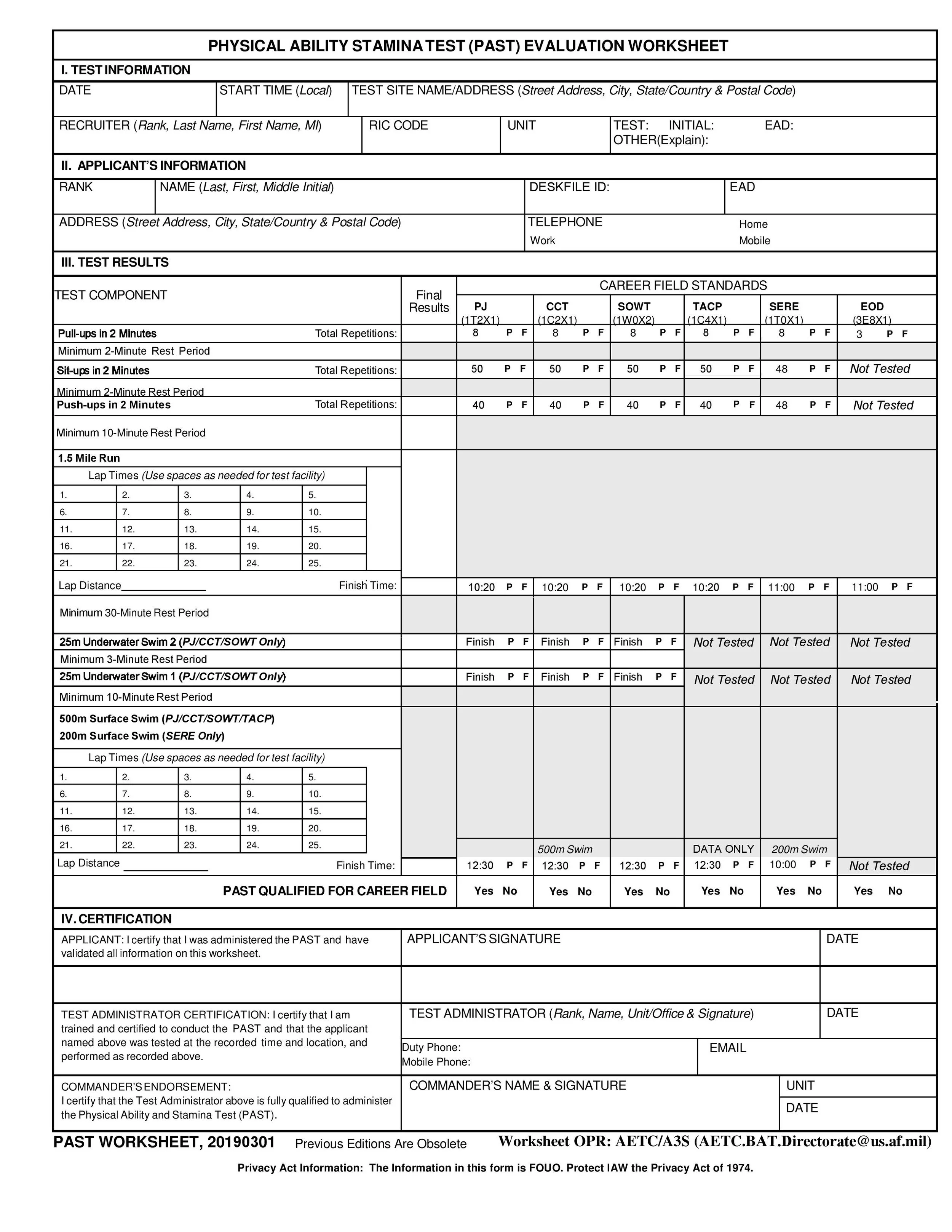This is the OLD PAST evaluation worksheet dated March 2019.
Below are the old past standards and grading criteria are listed
PARARESCUE INDOC PAST TEST STANDARDS
Events will be conducted in the following order
25m Underwater x2 at a 3 minute interval
500m Freestyle swim <10:07
30 min rest
1.5 mile run <10:10
10 min rest
Pull-ups >10
2 min rest
Sit-ups >54
2 min rest
Push-ups >52
GRADING CRITERIA
25m Underwater - The student will be wearing swim trunks and goggles or mask which can be provided at the assessment. The interval begins with the student standing with thier back to the wall in the shallow end of the pool facing the deep end. The student crouches down until the buttock's rest on the heels. The student will then lean forward and push off the pool wall with both feet. Stretch out arms and legs in a streamlined fashion. Utilizing the Keyhole stroke and Frog kick alternately the student will swim the required 25m distance remaining subsurface the entire distance. Once the distance has been met the student will turn around and ascend in a 45 deg angle towards the surface and freestyle swim back to the start position then remain standing until the next interval.
500m Swim - The student will be wearing swim trunks and goggles or mask. On the command of "Go" the student will leave the wall and begin to freestyle swim. If the student stops at any time the evaluation will end and the student will receive a failure for that iteration. Flip turns are not allowed at any time. If you have a gear malfunction you are expected to take care of it however the time will not stop. Grabbing on to the sides of the pool for any reason other than to turn will be considered s failure.
1.5 mi Run - The student will be wearing AF PT gear. Stopping at anytime will be considered a failure for that evaluation. Failing to meet the required time of 10:10 will be counted as a failure overall.
Pull-ups (1 minute)- Students perform pull-ups wearing PT gear. This exercise is executed on a pull-up bar or other horizontal bar. The individual grasps the bar with the palms away from the face, shoulder width apart. This is a two-count exercise. The exercise begins in the “dead hang” position. Count one; pull the body upward until the chin is level and over the bar. Count two; lower the body until the body returns to the “dead hang” position. Individuals will not swing excessively or “kip” as the chin is pulled over the bar. There will be no excess movement of your feet, bicycling, or using your chin to pull yourself over the bar. The legs are allowed to bend, but must not be kicked or manipulated to aid in upward movement. Hands must remain in contact with the bar at all times or the next repetition will not count. The repetition is counted upon completion of the upward movement. Repeat as many times as possible. The pull-up is designed to measure the strength and endurance of the back and biceps muscles.
· The optimal position to evaluate pull-ups is a 45 degree offset from the horizontal bar and grip position of the candidate and 2-3 meters from the trainee.
Sit-ups (2 minutes) - Students perform sit-ups wearing PT gear. Start with back and elbows flat on the ground, fingers interlocked behind the head; head on the ground and knees bent at approximately a 90 degree angle. Student’s feet should be held by a fixed object during this exercise; another individual may secure the feet in the absence of an appropriate fixed object. Sit-ups are a two count exercise. Count one; sit up until the back is vertical to the ground (base of the neck is above the base of the spine), where the shoulder and the hip form a line perpendicular to the ground. Count two; return to the starting position. There is no authorized rest position. If an individual raises hips from ground or fingers are not interlocked behind head during a repetition, the repetition is not counted. The repetition is counted upon completion of the upward movement. The sit-up is designed to measure strength and endurance in abdominal and hip flexor muscle groups used during specific mission tasks. Strength and endurance in these muscle groups are required to perform swimming, lifting, load-bearing, and hand-to-hand combat tasks.
· The optimal position to evaluate sit-ups is a 90 degree offset from the trainee.
Push-Ups (2 minutes)- Students perform push-ups wearing PT gear. This exercise starts from the front leaning rest position. The body must be maintained straight from head to heels with feet together. The push-up is a two count exercise. Count one; flex the elbows lowering the body until the elbows form a 90 degree angle. Count two; raise the body until the elbows are straight and locked. Repeat the exercise as many times as possible. The exercise is stopped/terminated when the individual lifts a hand(s), arm(s) to reposition, lifts leg or feet off the ground or the knee(s) touch the ground, raises butt in the air, sags the hips, does just upper body push-ups, executes a worm push-up, or can no longer complete the exercise.
NOTE: The only authorized rest position for personnel taking the PAST is the starting position (front leaning rest) without elevating the buttocks into the air, sagging the torso and without bending the knees or moving the hand position.
· The optimal position to evaluate push-ups is directly in front of the trainee, or at a 45* angle in front of the trainee, and in a seated or lowered position approximately 2 meters away.

